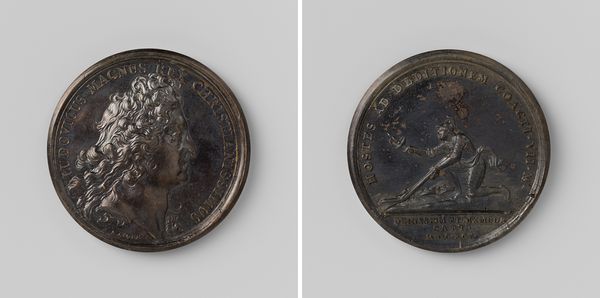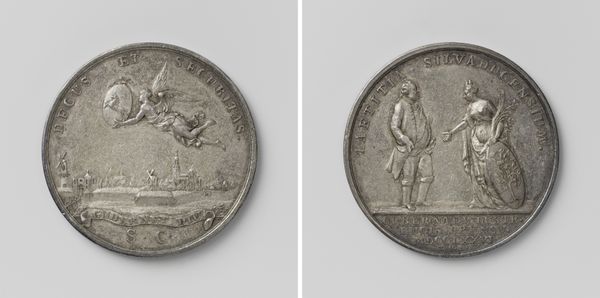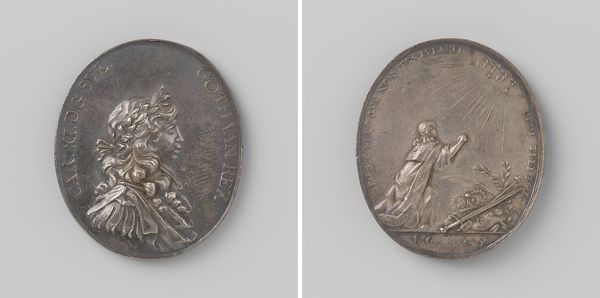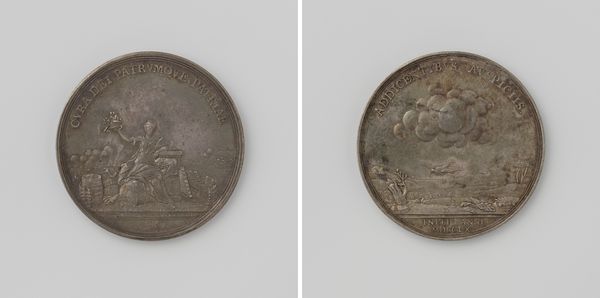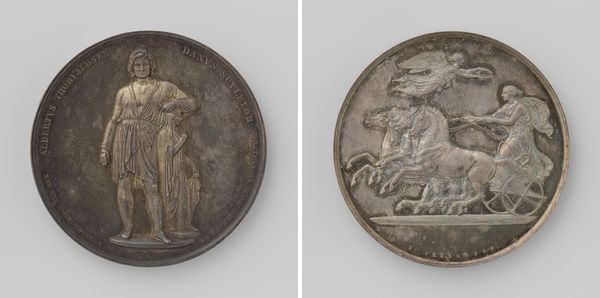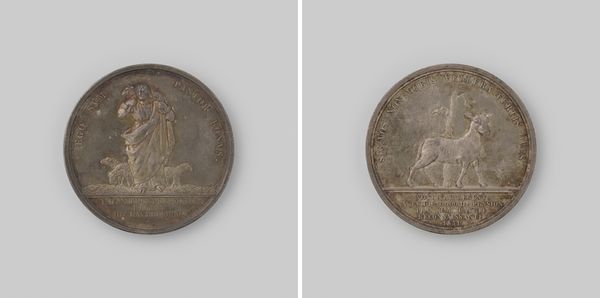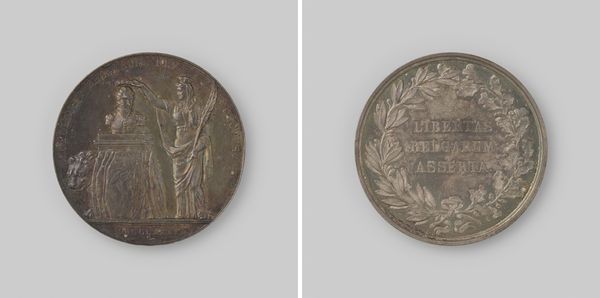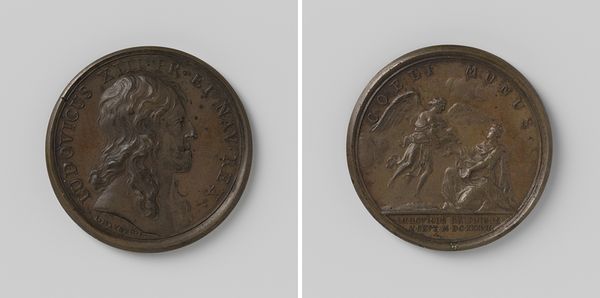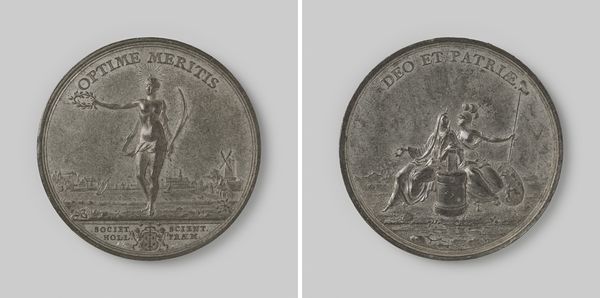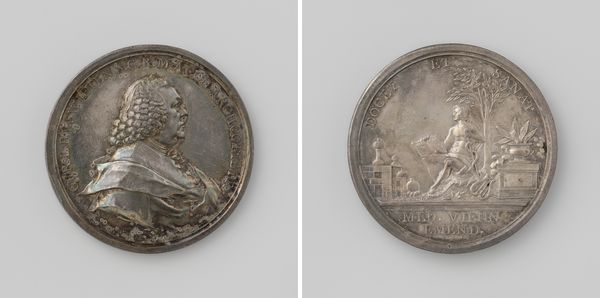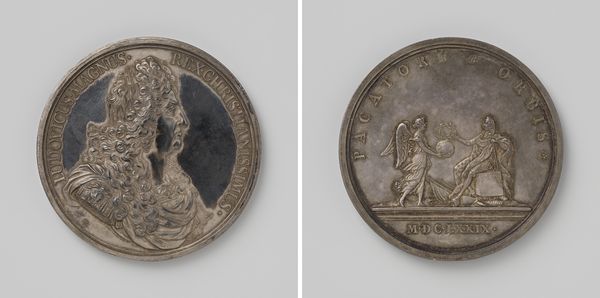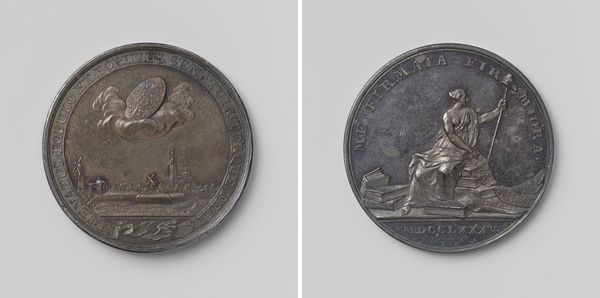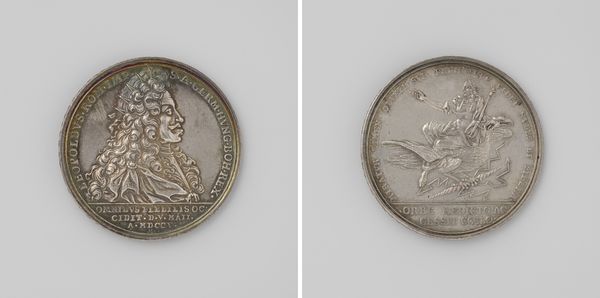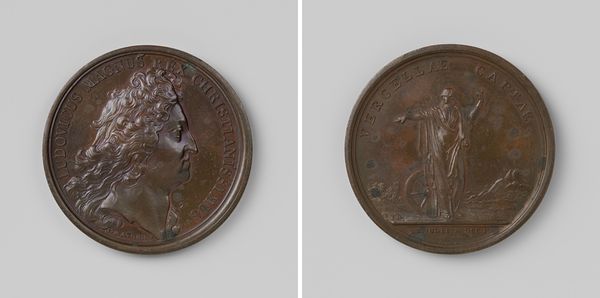
Vrede van Rijswijk, penning geslagen op last van de magistraten van Amsterdam 1697
0:00
0:00
metal, relief, sculpture
#
portrait
#
medal
#
baroque
#
metal
#
sculpture
#
relief
#
sculpture
#
history-painting
Dimensions: diameter 6.8 cm, weight 123.80 gr
Copyright: Rijks Museum: Open Domain
Curator: Looking at this piece, I’m struck by its cool, almost clinical austerity. The stark relief, the unyielding metal. It feels less like a celebration and more like a calculated statement. Editor: That's interesting. I see a representation laden with the hopes and realities of a continent exhausted by war. This is a medal commemorating the Peace of Rijswijk in 1697, commissioned by the Amsterdam magistrates. It reflects not just the cessation of conflict, but also Amsterdam's civic pride and mercantile interests tied to the peace. Curator: So, a commissioned piece then. I wonder about the specific alloys used, the striking process. These details tell us about the technical skill involved in production, and the division of labor within that historical moment of fabrication, because remember the profile name attached is that of the magistrate responsible for the mint, Johannes Drappentier. Were there specific craftspeople celebrated for making this object, what guilds did they work within? Editor: Indeed, and considering it’s baroque in style, we see allegorical figures emblematic of peace and prosperity. But who gets to benefit from this peace? "Europa" is prominently labelled. The text etched tells us that ‘peace, driven out by war, flourishes again’. How were women impacted by warfare and what roles might women such as those that Drappentier hired at the Mint, fill in society. How might their gender intersect with notions of class to frame social experiences of "peace?" Curator: Good point. And what about the function of these medals? They were instruments of soft power, crafted for distribution. The question becomes one of use and agency. Were they widely dispersed among all strata, or exclusively offered as symbols of elitist networks. Editor: I’m thinking also about the legacy of this peace. How did the Peace of Rijswijk shape subsequent conflicts and alliances? It's not simply about ending a war; it's about restructuring power dynamics and solidifying certain societal hierarchies. Looking closely at the icononography is peace represented equally? Or does power come into it? Curator: Absolutely, this shifts the interpretation away from simple commemoration towards material analysis. The piece stands as a lasting reflection of production itself—bronze in high relief, forged through fire and pressure. Editor: Exactly. The tangible symbolism embedded in metal serves as a poignant invitation to think about peace not only as an idealistic aspiration, but more so as a carefully wrought narrative forged through politics and civic performance. The coin's imagery helps shed light on Europe's relationship to historical conflict, while quietly advocating ideas about societal reformation.
Comments
No comments
Be the first to comment and join the conversation on the ultimate creative platform.
